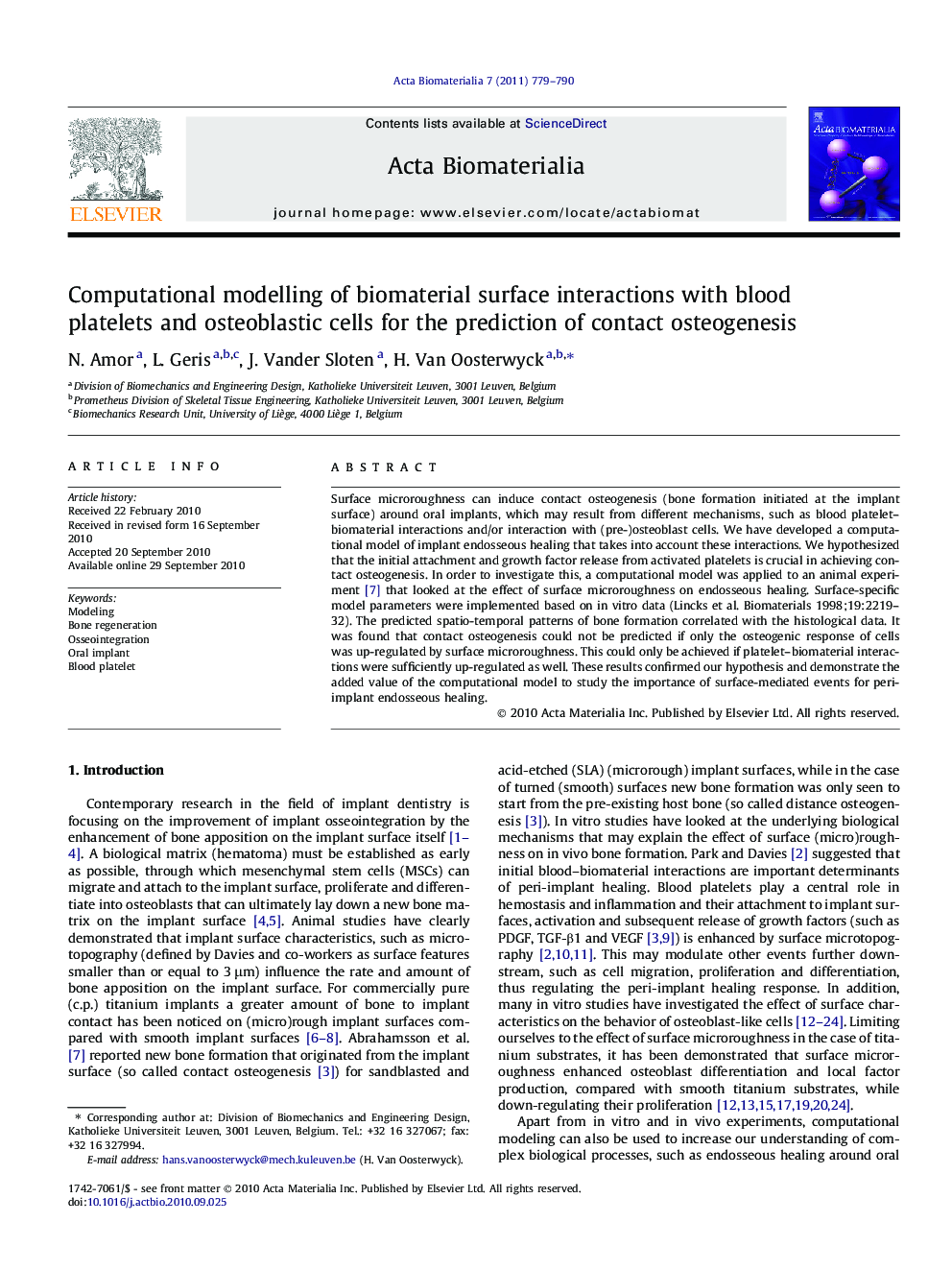| Article ID | Journal | Published Year | Pages | File Type |
|---|---|---|---|---|
| 987 | Acta Biomaterialia | 2011 | 12 Pages |
Surface microroughness can induce contact osteogenesis (bone formation initiated at the implant surface) around oral implants, which may result from different mechanisms, such as blood platelet–biomaterial interactions and/or interaction with (pre-)osteoblast cells. We have developed a computational model of implant endosseous healing that takes into account these interactions. We hypothesized that the initial attachment and growth factor release from activated platelets is crucial in achieving contact osteogenesis. In order to investigate this, a computational model was applied to an animal experiment [7] that looked at the effect of surface microroughness on endosseous healing. Surface-specific model parameters were implemented based on in vitro data (Lincks et al. Biomaterials 1998;19:2219–32). The predicted spatio-temporal patterns of bone formation correlated with the histological data. It was found that contact osteogenesis could not be predicted if only the osteogenic response of cells was up-regulated by surface microroughness. This could only be achieved if platelet–biomaterial interactions were sufficiently up-regulated as well. These results confirmed our hypothesis and demonstrate the added value of the computational model to study the importance of surface-mediated events for peri-implant endosseous healing.
